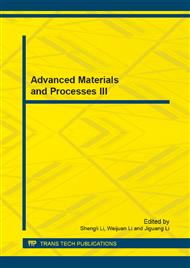p.1073
p.1077
p.1082
p.1087
p.1094
p.1099
p.1104
p.1110
p.1114
The Design of Power Supply with Feed-Forward Control Method for EBW
Abstract:
A kind of accelerating power supply device for electronic beam welder was introduced in this paper. The device adopts PWM modulation method, use IGBT as DC chopper. M, N two groups of H inverse bridge parallel with each other compose the inverter. Intermediate frequency AC produced by inverter was sent into intermediate frequency high voltage transformer, after the high voltage rectifying and filtering, the high voltage output running steadily. In order to improve the power supply devices output characteristics when power system fluctuates or load changes, feed-forward control strategy was introduced. Use the control method that feed-forward combining with feed-back. The experiments show that the adjusting speed of this power supply device is fast, the output voltage ripple is small, the technical indicators can meet high welding technology for electron beam welding machine.
Info:
Periodical:
Pages:
1094-1098
Citation:
Online since:
September 2013
Authors:
Price:
Сopyright:
© 2013 Trans Tech Publications Ltd. All Rights Reserved
Share:
Citation:


